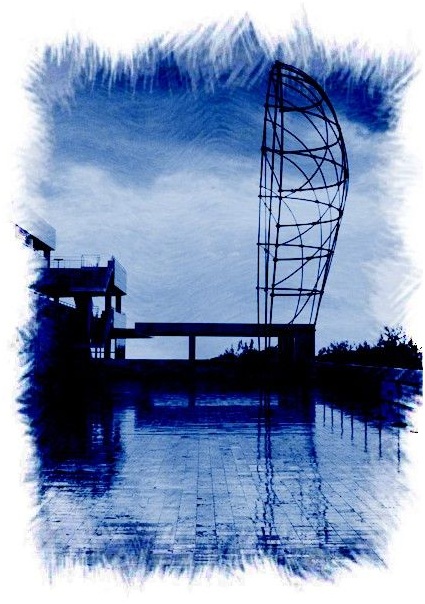Most of this reading wasn’t new for me, though I did get more out of the digital processing section. The information on saving files was helpful. I now understand the difference between a JPEG and a TIFF more specifically than just one is a bigger file. Also the last page gives information on reproducing photographs with other materials. Whitney Lee is highlighted with her latch-hook rug images from playboy.com. A website is also given where you can get your very own “naughty latch hook kit.” Don’t lie, I know you all want one…
Tag Archives: April Hayden
B&W Portraiture: Jack Radcliffe
Getting excited about Cyanotype: Christopher Derrick
4×5 film portraits
Ever wondered who actually uses this stuff? Well, here’s one guy who utilizes tilt shift and depth of field in 4×5 film portraiture.
http://www.ryangalbraith.com
He also protects his images, so you’ll have to go to the website to see them.
Alt. Process Reading Response Ch. 4
It was interesting to read about a little history of alternative processing. There are a lot of interesting ideas that I would like to try. I am especially interested in making transfers with acrylic gel medium. I tried that for the first time during Fall quarter for a drawing class, but I hadn’t thought of using one of my own photos. I also looked up Polaroid type 55 Positive/Negative 4×5 film which seems to be only sold on eBay and priced at about $200 for a box of 20 sheets… It sounded cool, too bad it’s so completely unaffordable.
Jo Babcock’s VW Van Camera
Check out the video about Jo Babcock’s pinhole camera made out of a VW van here: VW Van Camera
Sneak preview! It looks like this:

BBC Human Planet
Really incredible images and a great narration make me want to do travel photography! And color, I definitely miss color photography. You should watch this slideshow, it’s amazing.
Check it out here: Human Planet
Alternative printing material idea: Bamboo Plywood
Reading Assignment: Of Mother Nature and Marlboro Men
Bright’s comparison of Pfahl’s and Lewenz’s photographs of Three Mile Island (TMI) was very interesting to me. I really appreciate the choices a photographer makes in portraying a subject and these two extremes–beautifying the industrial and environmentally costly versus framing this eyesore as it appears from the windows of local homes–were a really interesting way of exploring the possible variety of a photograph’s potential impact. The politics and marketing strategies here were also quite opposite. It also made me think about the fine art world and how things like this are considered today. It’s been almost 30 years since this was published, but is it still so exclusive and political? Are such a small elite group targeted with only rare choices made for art for the masses, such as Lewenz’s?
Reading Assignment: Photography – The Essential Way
This introduction to view cameras and 4×5 film was very thorough and enlightening. I had no idea about the advantages of correcting or altering an image by adjusting the rise, fall, shift, tilt and swing. I really like the idea of being able to control the focus, however, I am not sure how easy it will be to catch on and create those results myself. There seem to be a lot of steps and many opportunities for error. I hope the difficulties really are worth the results as the reading suggests!





